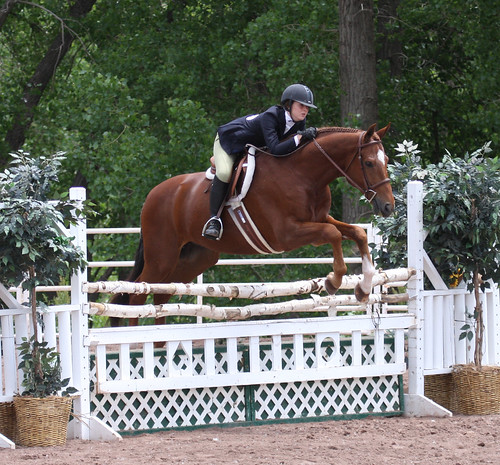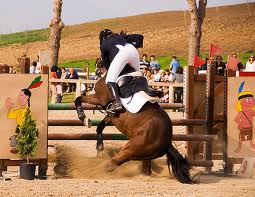What the Judge Is Looking For – Disobediences
 Before the judge even starts to judge the horse’s form over the fence the horse has to jump 8 fences successfully.
Before the judge even starts to judge the horse’s form over the fence the horse has to jump 8 fences successfully.
One of the biggest turn offs, for the judge, is a horse that misbehaves. This can be any sort of disobedience. It may be a run-out or a refusal at a fence or a horse/pony that is a gate rat (not wanting to leave the gate area) or being ‘nappy’ on course.
Refusals or runouts on course will be placed very low in the class and will often get a score in the 30’s or 40’s. If the class has few entries then a horse that refuses may have a chance at a placing but it is

uncommon for a horse that has a refusal to pin in a class.
Refusals Vs KnockDowns
Horses that refuse are placed below horses that have had a knock down. This is because the horse that refuses is not trying and it is a reflection of their character. A horse that tries and knocks down a fence is thought to have a good character, better than one that just outright refuses to go over the fence.
Shying and Bucking
Most judges are willing to forgive a nicely turned out horse in a green or novice class if it offers a playful buck, or an innocent shy at something or some one outside the ring (I once had a horse shy in a class because someone started a lawn mower directly adjacent to the show ring and it blew grass clippings into the path of the oncoming horse!). Unbrellas suddenly opening up, small children and dogs barking wildly come to mind. Allowing the rider and horse the benefit of the doubt on these occassions lets competitors know that you understand that the horse is green and enjoying themselves.
Rearing
One thing the judge will not forgive is a horse rearing. Rearing is dangerous at best and shows that:
- the horse doesn’t understand what is being asked of him
- the horse does understand and doesn’t want to do what is being asked
- the horse is frightened
Rearing is considered a disobedience and will be looked at in an unfavorable light when in the show ring. If your horse happens to rear, keep the horse moving forward and finish the round to the best of your ability. The rear will immediately place you at or near the bottom of the competitors. Use this opportunity to school your horse in a positive way so that the horse begins to understand what you want and that things are not as bad as you think.
Showing can be a stressfull situation so it is important to understand what the judge is looking for.

Pingback: Major hunter Faults | The Hunter Judge